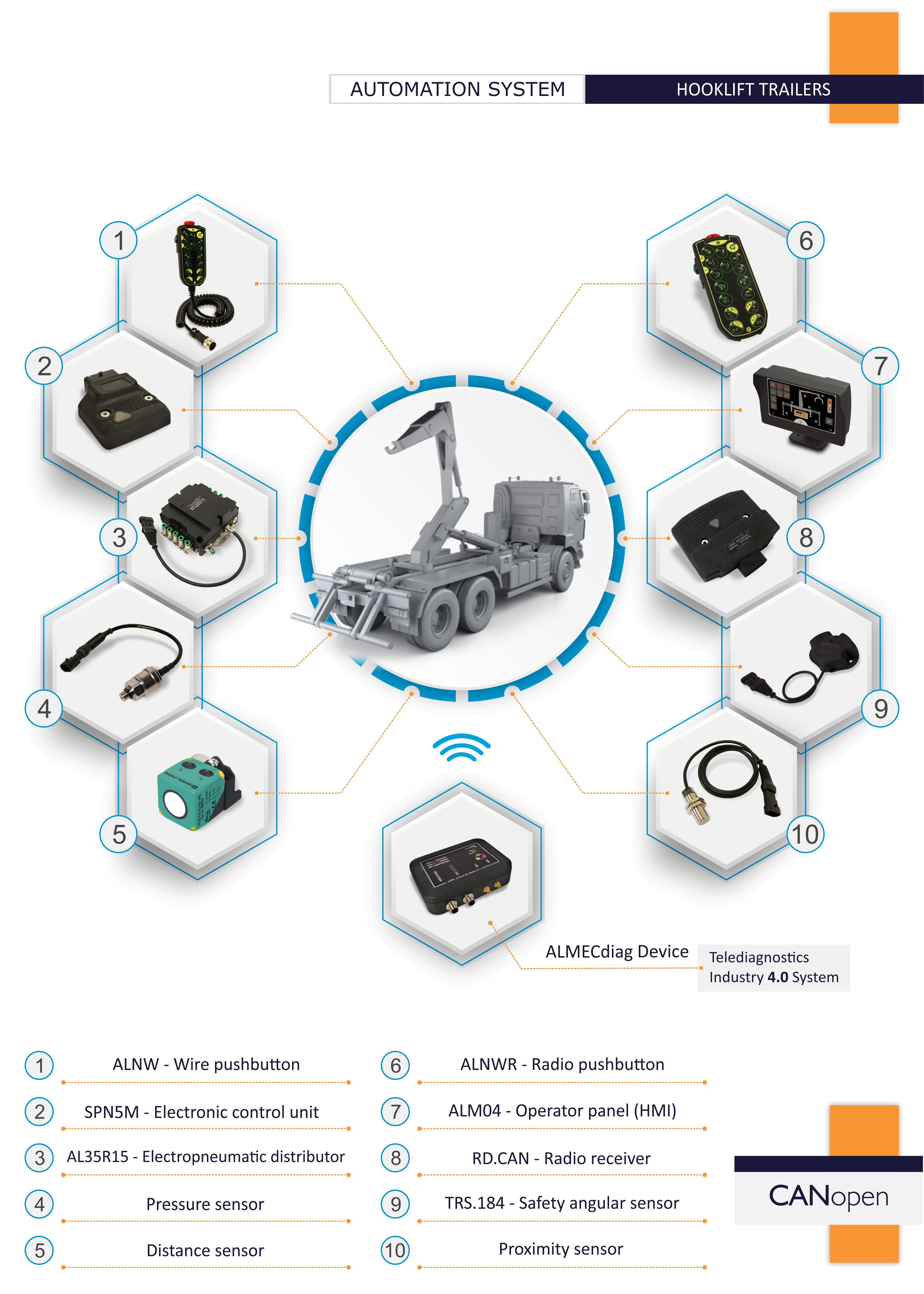ALMEC AUTOMATION SYSTEMS FOR AERIAL PLATFORMS
The technological innovation of ALMEC also involved the composition and operation of its own automation systems dedicated to aerial platforms. These systems, which communicate via the CANopen protocol, are normally composed as follow.
ALNW Wired Push-buttons Panel or AL50C Wired Control Console: These wired control interfaces allow for the control of various functions of the aerial platform.
SPN9, SPN6, or SPN6M Master Electronic Control Unit: These electronic control units serve as the “brain” of the automation system. They manage the information and commands from the wired control panel or console and coordinate the operation of the other components.
SPN5M Slave Electronic Control Unit: This electronic control unit works in synergy with the master control unit to perform specific functions within the aerial platform.
ALNWR Radio Control Transmitter Panel or AL50R Radio Control Transmitter Console: These radio control interfaces serve as wireless alternatives to the wired control panel or console. They allow for remote control of the aerial platform’s functions.
RDC EVO Radio Control Receiver Unit: This control unit receives signals transmitted by the radio control transmitter panel or console and relays them to the master control unit for executing the desired functions.
MVS.B3E or MVS.B4E Operator Panel: This operator panel provides a user interface for displaying system status information and interacting with the aerial platform.
TRS.184 or TRS.ALMX Angular Safety Sensors: These sensors detect the angle and movement of the aerial platform to ensure safety during operation. Depending on the model, either TRS.184 or TRS.ALMX sensors may be used.
ALMECdiag Device Modem: The modem, connected to the aerial platform, facilitates the transmission of data and information about its operation to a dedicated portal developed for the customer on the ALMECdiag Portal platform.
Various Sensors: ALMEC integrates a variety of specialized sensors to monitor and collect data on different variables relevant to the aerial platform’s operation.
Below is a graphical illustration of a typical system.


